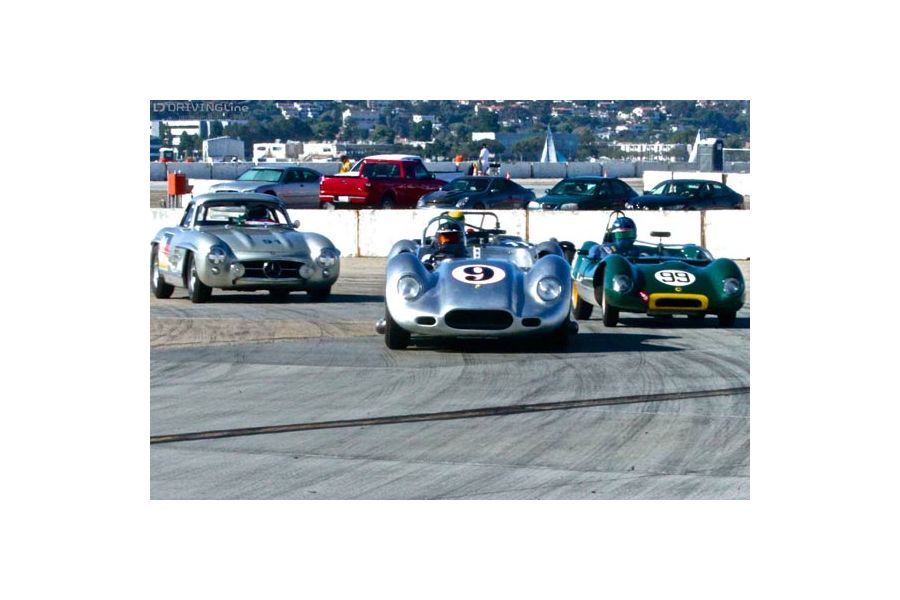Fine Whine

The classic car enthusiasts that enjoy racing their 1960s-era Mustangs, half-century-old Porsches and classic Mazda Miatas belong to a loose collection of vintage auto racing buffs taking to road courses from Virginia to Florida, in the Midwest and Texas and from California and Connecticut.
Their numbers reach into the thousands, gearing up for weekends of wheel-to-wheel competition primarily in the late spring, summer and early fall – cheered on by small coteries of friends, fans and fellow drivers. The motorists are hybrids: They're full-fledged sportsmen who race to win, or at least finish decently, while at the same time steering to preserve the vintage car hobby and historic legacy of decades-old sports cars, roadsters and muscle machines.
“Typically set up in classes, the vintage-car races, such as the yearly kickoff Wild Hare Run in early April at Virginia International Raceway, involve a series of qualifying tours around winding and oval tracks from 1 to 3 miles in length to line up the vehicles by best lap times for the finals on Saturdays or Sundays.
According to a 2016 article on the Hagerty classic vehicle insurance website, vintage auto racing started up in unrelated events 68 years ago by separate collectors at a road course in Bridgehampton, New York, and on a horse track in Del Mar, Calif.
Classic auto races climbed in numbers and interest gradually, and by 2000, there were 30 or so vintage racing sanctioning bodies in the U.S. – most run by volunteers. Entrepreneurs got involved by the early 2000s to operate vintage racing circuits while expanding the number of races and registered drivers.
In another Hagerty.com story three years ago, John L. Stein wrote about the Best Buys in Vintage Racing, noting “there’s a great old saying in racing: Speed costs money; how fast do you want to go?”
While reporting about a 1962 Ferrari 250 GTO that sold at auction a year earlier for a record $38 million, he focused on vintage models with a $10,000-$40,000 investment that start-up racers could pursue.
Stein cited four types of racing cars, including:
• Small-bore production sports cars with low powered four-cylinder engines, small sizes and lightweight such as the Austin-Healey Sprite, MG Midget and Triumph Spitfire. He said the models are “simple to own and maintain, and with limited power, they are not daunting for new racers to learn.” Prices are $10,000-$20,000; slightly larger and more expensive classic sports cars are the Datsun 1600 Roadster, Triumph TR and MGB.
• Formula Vee and Formula Ford classes, built for “fun open-wheel racing” and costing $10,000-$20,000 for a one seater. Powering the Formula Vees are air-cooled Volkswagen engines, while Formula Fords used 1.6-liter pushrod engines and race-car suspension.
• Spec Miatas, a “carefully regulated” but hugely popular class of the Mazda convertible. In their earliest versions, the Miatas are more than 30 years old and qualify as vintage. Drivers can race in competitive fields with a $10,000-$15,000 investment.
• A Sedan/B Production categories that take in “virtually any Mustang from 1964½ forward. There’s a world full of track-ready Mustangs already out there from $20,000 to $40,000,” Stein said. Alternatives include the 1963-65 Ford Falcon, Dodge Dart or for more money, a Corvette.
Copyright © CTW Features